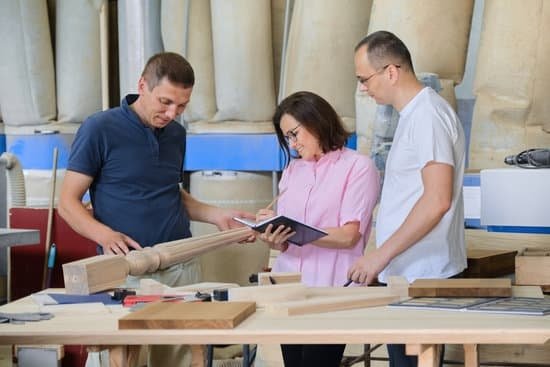Introduction
Advanced woodwork is a highly rewarding and complex skill to acquire. It requires dedication and a passion for the craft in order to master it. With advanced woodworking comes an array of different projects that you can create, including furniture, decorative items, and more. When you are proficient in advanced woodworking techniques, your work stands out from the average woodworker’s piece. It allows you to channel your creative side and bring life to the pieces that you create. Additionally, learning these skills provides practical life skills that any artisan would be proud of. Mastering advanced woodwork through practice takes commitment and hard work, but pays off each time you finish a masterpiece.
Overview of Advanced Woodworking Skills
Advanced woodworking requires a mastery of many different skills and techniques. These core skills include forming precise joints for strong, secure assemblies; finishing the surface of a project with appropriate products; craftsmanship and design principles to enhance visual appeal; understanding the influence of grain direction on various projects; building precise frames and bodies for long-lasting results; as well as constructing pieces with raised panel doors, complex carvings and turnings.
Other skills necessary for advanced woodworking include joinery techniques such as dovetail, mortise-and-tenon, dowelling or biscuit joining. These techniques are used to achieve strong, invisibly joined components in cabinets, chests and tables. Advanced woodworkers also have the ability to create custom molding patterns that can be shaped on their machines or with hand planes. They may also be called upon to do intricate inlay work that is both decorative and durable. Woodturners may be required to complete hollow spindles or sculpted pieces efficiently without compromising craftsmanship. In addition to these skills, advanced woodworking includes an understanding of tools like routers and shapers which are often used to carve reliefs into furniture components or mill shapes into panels for raised door panels. Finally, advanced joinery may require knowledge of special clamps designed to hold large assemblies together firmly until glue has cured prior to machining operations being completed.
Woodworking Techniques
Advanced woodworking techniques involve the use of powerful and often precise tools, such as routers, lathes, jointers, saws, planers, drills, saw blades and sanders. Each tool is used for a particular task and when used in combination with others can create finely crafted pieces of furniture or other wooden items. Depending on the complexity of the project and the desired results, each type of tool must be carefully selected to ensure that the final product matches desired specifications.
Routers are one of the most important advanced woodworking tools and are used to cut out shapes from larger pieces of wood. A router is a motorized tool that moves along a guide called a template which allows it to precisely shape and hollow out pieces according to user-defined patterns. Lathes are another important hand tool used in woodworking; it rotates and shapes irregularly shaped or curved pieces into perfectly symmetrical circular items like decorative spindles or chair legs. Jointers are power tools utilized for crafting board edges into perfectly parallel faces in preparation for connecting boards to create larger sections such as tables or boxes. Saw blades assist in making several types of very precise cuts such as dovetails while planers remove layers off surfaces reducing sizes in order to match certain dimensions or smooth out rough finishings. Drills help create precisely placed holes preparing surfaces for fastening nuts or screws into place; these holes can also be enlarged by using various bulky bits for pocket hole joinery projects. Sanders are efficient at taking off stock from wide surfaces including flat ones on doors handy if finer detail is desired like rounded edges treatmentg casing profiles among other details.
Advanced Woodworking Projects
Advanced woodworking requires a high level of skill and expertise. Many years of practice and study are necessary to master this craft. Advanced woodworkers must be able to work with precision and fine detail in order to create distinct objects out of raw materials. To achieve this, they must have an intimate knowledge of different types of woods, their associated properties, and how to manipulate them. Advanced woodworking also demands an understanding of advanced joinery techniques, planing, milling, shaping and finishing processes.
Besides technical knowledge and skill, a advanced woodworker must also possess certain traits such as patience, focus, an eye for detail, problem solving skills and creative thinking abilities. They must know how to safely use tools from sharp chisels to powerful saws. Furthermore, having a good sense for design will help the advanced woodworker create beautiful works with tasteful lines that reflect their individual expression. With all the rules for these kinds of projects come lots of opportunities for innovation in design and technique.. So whether it’s carving intricate patterns into furniture legs or building custom cabinetry from scratch; advanced woodworking is sure to challenge any aspiring craftsman looking to hone their craftsmanship skills.
Creating a Safe Environment
Safety is paramount when engaging in advanced woodworking projects. In order to create a safe environment, there are several things that should be discussed and implemented before beginning any project. First and foremost, protective gear should be worn at all times, including safety glasses, dust masks, and hearing protection. Long hair or clothing should also be securely held back or tucked away so it does not get caught in any tools or machinery. It is also important to inform any other workers in the same work space of what tools are being used, where they have been placed, and how they will be operated as to prevent any accidents from happening. Additionally, clear communication between all members of a given workspace can help to ensure everyone is aware of their surroundings and potential hazards. Finally, making sure your tools are clean and free of any dirt or debris that could impede their proper functioning can greatly reduce the chances of an accident occurring while working on the project. Taking these precautions ensures that you have created a safe environment for advanced woodworking.
Advanced Woodworking Supplies
Tools:
Advanced woodworking requires a variety of tools, most notably power tools such as jigsaws, routers, circular saws, and Sanders. It is advantageous to also have some specialized hand tools such as chisels, hammers, screwdrivers and spoke shaves. For the highest level of woodworking projects, many woodworkers will invest in CNC (computer numerical control) machines to help streamline the work process.
Materials:
Wood is the main material used in advanced woodworking. Wood can come in many shapes and forms classified by grade for specific types of projects. Examples include hardwoods such as mahogany and oak; softwoods such as pine and fir; particle board for cabinet frames; plywood for dressers and tables; laminates for decorative projects; paint and stain for finishing surfaces; glues, nails and screws for holding everything together.
Techniques:
Advanced woodworking techniques involve intricate joinery that requires patience and accuracy to complete successfully. Common joinery techniques may include mortise-and-tenon joints, doweling or biscuit joints, box joints or dovetail joints – different techniques that create unique effects when pieces are connected together. Additionally, advanced techniques also may use fillers or Veneer which can be applied over painted or stained surfaces to achieve certain effects like antiquing furniture styles or creating faux finishes with patterns.
Enhancing Your Woodworking Skills
Advanced woodworking involves more than mastering the basics. To hone your abilities, it is important to take a systematic approach. One way to do this is by studying woodworking techniques and tools available today, such as specialized hand tools, lathes, saws and jigs. Taking the time to understand and develop proper technique helps maximize safety and efficiency in any project.
In addition, there are a wealth of educational opportunities available for improving your skills through online courses or in-person workshops with experienced instructors. These resources can provide guidance on topics such as using power tools or constructing complex projects such as cabinets, furniture and shelving units. Additionally, there are many books dedicated to teaching advanced woodworking techniques that can help expand your knowledge on the subject.
Finally, practice makes perfect! Once you gain a better understanding of techniques and tools available to you, start small and work your way up – think about starting with simple projects like birdhouses or cutting boards that offer great practice without a large investment of time or money. As you become comfortable with various woodsworking methods and materials, move up to larger projects with more intricate designs. Continue practicing and challenging yourself by taking on increasingly complex projects; don’t be afraid to make mistakes ” it is part of the learning process!
Conclusion
Advanced woodworking offers so much joy and satisfaction to those who take part in it. From the moment of ideation to the crisp final grains of a completed product, every step of this process is an opportunity to create beautiful, timeless pieces of furniture. Advanced woodworking requires skill, knowledge and experience in order to excel at the craft and create something worth showing off. With practice, patience and dedication one can become truly proficient at this art, able to make practically anything they wish out of wood. The benefits are immense; not only do you get personal satisfaction from making something yourself, but you can also turn your passion into a profitable business. Overall, advanced woodworking presents a great option for anyone wanting to learn how to combine their love of nature and creativity as one wonderful activity.

Hi everyone! I’m a woodworker and blogger, and this is my woodworking blog. In my blog, I share tips and tricks for woodworkers of all skill levels, as well as project ideas that you can try yourself.





